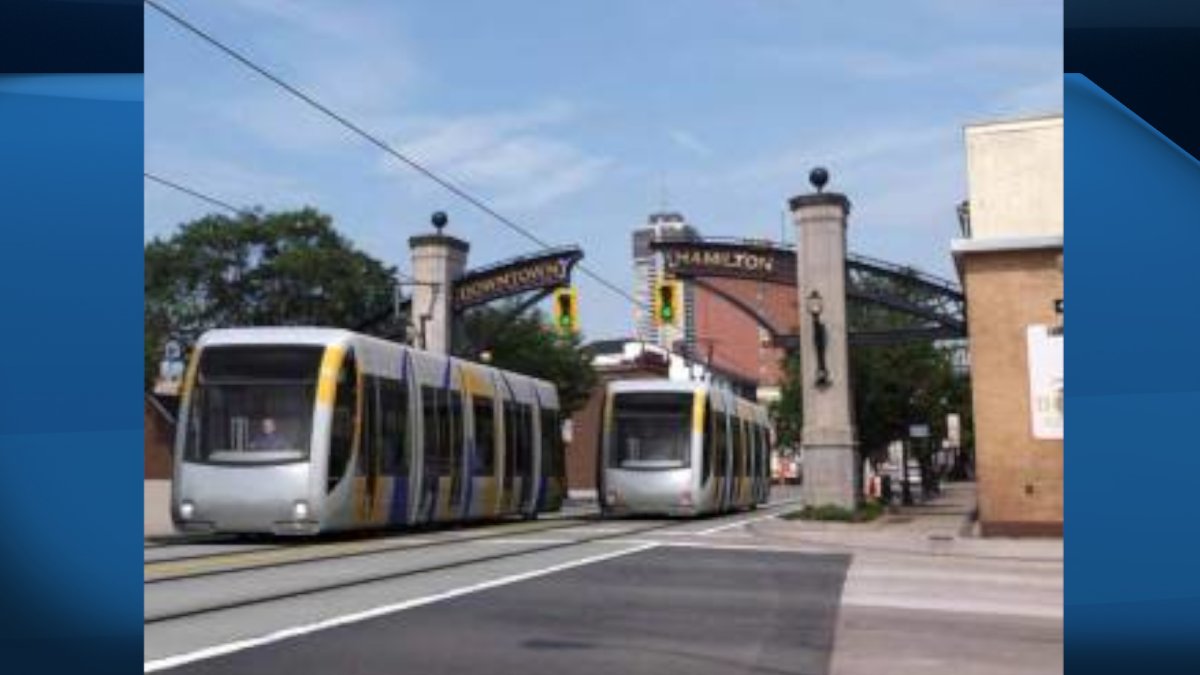The province’s transportation agency admits it’s still feeling the impacts of industry-wide construction price increases as it continues to plan out Hamilton’s $3.4 billion light rail transit (LRT) project.

During an update in front of a city hall committee Friday, Metrolinx didn’t have specific dates for when contracts will be awarded nor any potential increases in cost due to supply-chain shortages and labour issues.
“So we are all feeling the pressures within the marketplace of construction price increases. We don’t have new or updated estimates to share at this point,” Hamilton LRT vice-president Jason Fellen said.
“I can tell you that we carefully monitor the markets. Obviously, we’re very active in the markets as well with contractors across the region.”
The Crown agency told Global News in February of last year that building of the local LRT was being “closely monitored” amid trends in the supply chain that could bump costs and change the timeline for completion.
Concerns were raised at that time by Hamilton Flamborough-Glanbrook MPP Donna Skelly who cited worry over the construction of Calgary’s $5.5-billion Green Line LRT extension.
“My concern is at what point do we say … is this going to become a $4 billion project? Is it going to become a $5 billion project?” the MPP told Global News at the time.
Cost overruns, including construction and ongoing operation of the line, were at the core of the Ford government’s decision in 2019 to scrap the Hamilton project.
Hamilton’s LRT got back on the rails in May 2021 after an agreement was reached between the province and federal governments to jointly fund the 14-kilometre light rail.
The city of Hamilton is expected to keep fare revenue once the LRT is operational, but will be responsible for daily operating and maintenance costs.
The province is on the record saying it will cover cost overruns during construction, but Skelly submitted that they’re likely “not unlimited.”
In early 2022, project managers for Calgary’s LRT expansion opted to split a stage of the CTrain construction into smaller phases amid concerns of even being able to build a planned second stage.
The chair of the CTrain addition admitted delays with procurement for the utility relocation project in the Beltline and downtown core to make way for a tunnel.
Fellen told Hamilton’s committee Metrolinx is seeking to do something similar, creating two main packages to sort out “corridor complexities” via separate contracts to “leave a more manageable risk profile.”
The first package will deal with “high risk elements” like utility relocations and the moving of “urban realm elements” like roads, bridges and structures, expected to equate to roughly half of construction costs for the entire project.
Package two will focus on rails, guideways, the storage facility and the actual LRT vehicles.
“By removing or de-risking, to the extent we can, the early civil works, we create a clearer path for the second package focused on rail and LRT infrastructure,” Fellen explained.
“Where we will be doing select relocations of utilities … we hope to get them off of the corridor entirely.”
Fellen indicated that construction of the line from McMaster to Eastgate Square will likely begin in the west end before moving east.








Comments